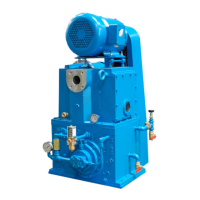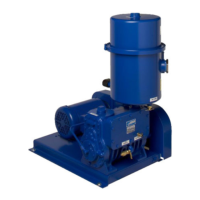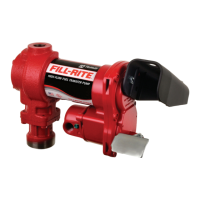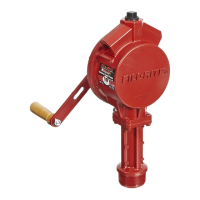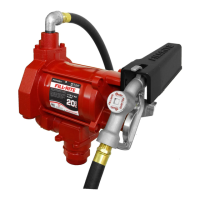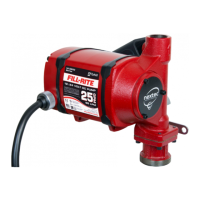15
05
Maintenance
Manual 1807 Rev B p/n 001807 0000
FLOODING
If the pump is not vented to atmosphere when
stopped under vacuum, it is possible for oil to ood
the pump cylinder, causing a hydraulic lock that
can make it difcult to start the pump.
To release this hydraulic lock, fully open the gas
ballast valve and try to turn or rock the pump pulley
by hand to force out the oil. Do not apply excessive
force to turn the pump pulley, such as with a long
pry bar.
OIL MIST ELIMINATOR
It may be necessary to clean out the oil separator
or change the replaceable lter element after the
pump has been in service for a long time. It may be
necessary to do so quite frequently if mechanical
contaminants are present or if oil sludging due to
chemical attack takes place. To do this, remove
the top cover of the oil separator and clean it as
required.
Since pump applications vary greatly, operating
experience is the best guide for determining
the interval for replacing the oil mist eliminator
element.
NOT: N Drain valves in the oil mist eliminator are
application-specic.
Change the oil mist eliminator if:
• Visual inspection shows the oil mist eliminator
element is blocked by foreign matter.
• Pump backpressure as read at the inlet to the
oil mist eliminator (or the oil ll plug) reads
higher than 4 – 6 psig (27.57 – 41.36 kPa). This
indicates the element is contaminated.
• Motor current exceeds the manufacturer’s
recommendations shown on the motor
nameplate. This indicates the element is
contaminated.
• Mist is discharged from the oil mist eliminator.
This indicates the element is ruptured or the
gasket is not sealing.
The oil separator-mist eliminator assembly can
ood if the pump is operated for prolonged periods
higher than 5 Torr (6.7 mbar a). This oil buildup will
cause oil droplets to be discharged when the pump
is operating. To remove this trapped oil, decrease
the pump operating pressure to less than 5 Torr
(6.7 mbar a) until the trapped oil can return to the
pump.
If it is not feasible to operate the pump at 5 Torr
(6.7 mbar a) or below to prevent ooding the oil
separator-mist eliminator assembly, install an oil
return line (see Figure 5-1). If the pump operating
range is 5 – 150 Torr (6.7 – 200 mbar a), the return
line should connect to the gas ballast valve, in
which case the valve must not be closed. If the
operating range is above 150 Torr (200 mbar a),
the oil return line should connect to the pump at
the suction port area.
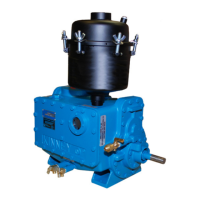
